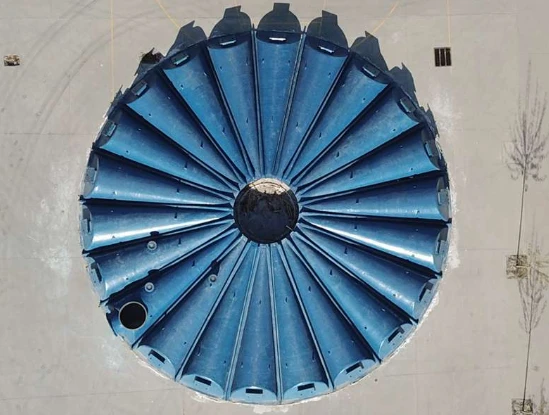
-
 Afrikaans
Afrikaans -
 Albanian
Albanian -
 Amharic
Amharic -
 Arabic
Arabic -
 Armenian
Armenian -
 Azerbaijani
Azerbaijani -
 Basque
Basque -
 Belarusian
Belarusian -
 Bengali
Bengali -
 Bosnian
Bosnian -
 Bulgarian
Bulgarian -
 Catalan
Catalan -
 Cebuano
Cebuano -
 China
China -
 China (Taiwan)
China (Taiwan) -
 Corsican
Corsican -
 Croatian
Croatian -
 Czech
Czech -
 Danish
Danish -
 Dutch
Dutch -
 English
English -
 Esperanto
Esperanto -
 Estonian
Estonian -
 Finnish
Finnish -
 French
French -
 Frisian
Frisian -
 Galician
Galician -
 Georgian
Georgian -
 German
German -
 Greek
Greek -
 Gujarati
Gujarati -
 Haitian Creole
Haitian Creole -
 hausa
hausa -
 hawaiian
hawaiian -
 Hebrew
Hebrew -
 Hindi
Hindi -
 Miao
Miao -
 Hungarian
Hungarian -
 Icelandic
Icelandic -
 igbo
igbo -
 Indonesian
Indonesian -
 irish
irish -
 Italian
Italian -
 Japanese
Japanese -
 Javanese
Javanese -
 Kannada
Kannada -
 kazakh
kazakh -
 Khmer
Khmer -
 Rwandese
Rwandese -
 Korean
Korean -
 Kurdish
Kurdish -
 Kyrgyz
Kyrgyz -
 Lao
Lao -
 Latin
Latin -
 Latvian
Latvian -
 Lithuanian
Lithuanian -
 Luxembourgish
Luxembourgish -
 Macedonian
Macedonian -
 Malgashi
Malgashi -
 Malay
Malay -
 Malayalam
Malayalam -
 Maltese
Maltese -
 Maori
Maori -
 Marathi
Marathi -
 Mongolian
Mongolian -
 Myanmar
Myanmar -
 Nepali
Nepali -
 Norwegian
Norwegian -
 Norwegian
Norwegian -
 Occitan
Occitan -
 Pashto
Pashto -
 Persian
Persian -
 Polish
Polish -
 Portuguese
Portuguese -
 Punjabi
Punjabi -
 Romanian
Romanian -
 Russian
Russian -
 Samoan
Samoan -
 Scottish Gaelic
Scottish Gaelic -
 Serbian
Serbian -
 Sesotho
Sesotho -
 Shona
Shona -
 Sindhi
Sindhi -
 Sinhala
Sinhala -
 Slovak
Slovak -
 Slovenian
Slovenian -
 Somali
Somali -
 Spanish
Spanish -
 Sundanese
Sundanese -
 Swahili
Swahili -
 Swedish
Swedish -
 Tagalog
Tagalog -
 Tajik
Tajik -
 Tamil
Tamil -
 Tatar
Tatar -
 Telugu
Telugu -
 Thai
Thai -
 Turkish
Turkish -
 Turkmen
Turkmen -
 Ukrainian
Ukrainian -
 Urdu
Urdu -
 Uighur
Uighur -
 Uzbek
Uzbek -
 Vietnamese
Vietnamese -
 Welsh
Welsh -
 Bantu
Bantu -
 Yiddish
Yiddish -
 Yoruba
Yoruba -
 Zulu
Zulu
Exploring the Benefits and Applications of FRP Hoods in Modern Industries
The Importance of FRP Hoods in Modern Engineering
In the realm of modern engineering, material selection plays a crucial role in the design and functionality of various components. One such innovation is the use of Fiber Reinforced Polymer (FRP) hoods, which have emerged as a popular choice in numerous applications ranging from automotive to industrial equipment. FRP hoods offer a combination of strength, lightweight properties, and corrosion resistance, making them an ideal solution for many demanding environments.
Understanding FRP
FRP is a composite material made by combining a polymer matrix with reinforcing fibers. The fibers, typically glass, carbon, or aramid, provide increased structural integrity, while the polymer matrix binds everything together and protects the fibers from environmental factors. This unique combination results in a material that boasts remarkable tensile strength and rigidity, but remains significantly lighter than traditional materials like steel or aluminum.
Benefits of FRP Hoods
One of the most significant advantages of FRP hoods is their weight-to-strength ratio. For industries such as automotive, reducing the overall weight of vehicles can lead to improved fuel efficiency and enhanced performance. By substituting heavier materials with FRP, manufacturers can create lighter, more efficient designs without compromising on durability.
Additionally, FRP hoods are highly resistant to corrosion, which is critical in environments where components are exposed to harsh chemicals or extreme weather conditions. Traditional metal hoods are often vulnerable to rust, leading to deterioration and failure over time. In contrast, FRP hoods maintain their integrity even in the most challenging conditions, offering a longer lifespan and reduced maintenance costs.
Aesthetic Versatility
frp hood

Beyond performance characteristics, FRP hoods also provide aesthetic versatility. They can be manufactured in various colors and finishes, allowing engineers and designers to customize the appearance of the product without the need for additional coatings or paint. This aesthetic flexibility is particularly beneficial in the automotive industry, where aesthetics play a significant role in consumer choice.
Applications in Various Industries
FRP hoods are proving to be invaluable in different sectors. In the automotive industry, manufacturers frequently use FRP hoods for their lightweight properties and aerodynamic designs. Race cars, in particular, utilize FRP due to its ability to withstand high speeds and potential impacts while enabling significant weight savings.
In the aerospace industry, where every ounce matters, FRP components help in the design of lightweight and fuel-efficient aircraft. The use of FRP allows for the production of complex shapes that traditional materials struggle to achieve, thus contributing to better aerodynamic efficiency.
Industrial applications are also reaping the benefits of FRP hoods. Electrical enclosures, chemical storage tanks, and equipment covers often employ FRP materials to ensure durability while minimizing the risk of corrosion and wear.
Conclusion
As the demand for efficient, durable, and light-weight components continues to rise, FRP hoods will undoubtedly play a pivotal role in shaping the future of engineering. Their combination of strength, corrosion resistance, and design flexibility makes them an exceptional choice across various industries. As technology advances and the manufacturing processes for FRP improve, it is likely that we will see an even broader adoption of FRP hoods, further revolutionizing the way we approach design and functionality in engineering. The future is bright for FRP, and its applications are boundless.









